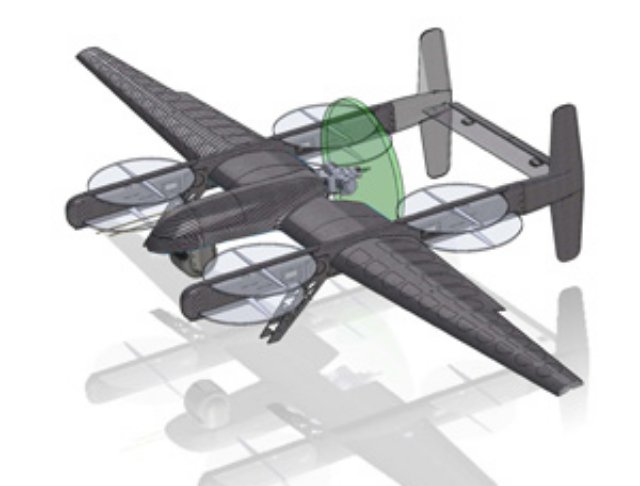The Hybrid Quadcopter UAS has the extended air endurance of a Predator but can take off like helicopter from the back of a frigate. No wonder the U.S. Navy has expressed interest in this unmanned helicopter–airplane hybrid from Latitude Engineering, a small company from Tucson, Arizona.
Weighing in at 25 pounds, the Hybrid Quadcopter UAS looks like a twin-boom UAS but with four helicopter blades. It’s a configuration sparked by a wild brainstorming session involving company founder Jason Douglas, Latitude design engineer Bayani Birkinbine says.
“In mid-2011, Jason and our aerospace engineer Justin Armer tossed around the idea ‘What if we were to combine a quadcopter with a regular fixed-wing aircraft?’ and then they literally put together a prototype within a day and tested it manually with two RC boxes,” he says.
The first prototypes were RC toys, but the platforms quickly grew in size and sophistication. As the aircraft scaled up, Latitude had how to figure out how to integrate an autopilot with the Hybrid Quadcopter UAS—no mean feat given the not-quite-a-helo, not-quite-an-airplane nature of the aircraft. “There are autopilots with fixed-wing control laws, and there are autopilots with helicopter control laws, so we had to go into the firmware and do a lot of custom engineering,” Birkinbine says.
Last summer the Latitude team conducted the first real flight of the Hybrid Quadcopter UAS (well, one of its inexpensive stunt doubles), which until then had been managing only low-altitude hops. Even then, the team had to land the UAS with steering assistance from a Cloud Cap Technology autopilot.
The stunt-double prototypes have since flown autonomous end-to-end flights, but being all-electric, they don’t have much endurance. Birkinbine expects the operational, gas-powered Hybrid Quadcopter UAS to fly for 12 to 15 hours while carrying a 2.3-pound TASE200 electro-optical infrared camera.
The approximately $25,000 25-pound UAS should be ready in six to 12 months. Latitude is already building a larger, longer, $55,000 60-pound endurance version of the Hybrid Quadcopter UAS that the Navy will be testing in the fall, and which will be fully autonomous. “The idea is long-endurance intelligence, surveillance and reconnaissance. No runway, no arresting net. A very small operational footprint,” Birkinbine says.
Source: Popular Mechanics

